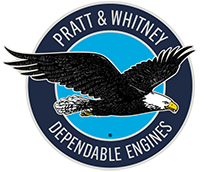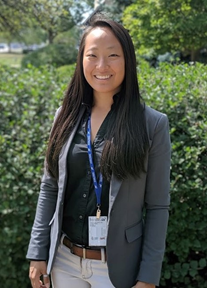
AeroAcoustics Research Consortium (AARC)
The AeroAcoustics Research Consortium is a partnership among NASA Glenn Research Center, Airbus,
Honeywell, Pratt & Whitney, and Rolls-Royce, managed by OAI, designed to promote world-class aeroacoustics
research and sustained interaction between researchers and consortium members.
Purpose and Mission
The AeroAcoustics Research Consortium (AARC) was established in 2001 by NASA Glenn Research Center and Industry partners with the goal of advancing the development of technologies for reducing the environmental impact of noise produced by commercial aircraft. Since that time, significant expansion of commercial air travel and revolutionary changes in flight systems and operations, combined with increased community engagement and national and international regulations, have only increased the demand for innovative approaches to controlling noise, which need to be made with the often-competing requirements of improving performance and reducing emissions.
Through its Advanced Air Vehicle Program (AAVP) NASA supports research aimed at evaluating and developing technologies for new aircraft systems and exploring far-future concepts for revolutionary improvements in air travel. The AAVP goal is to enable safer, more efficient, cleaner, and quieter air travel. Partnerships between government, industry and academia are critical to the achievement of this goal.
The AARC provides a collaborative environment for NASA and its Industry partners to engage with international researchers in aeroacoustics to work toward the elimination of technical barriers in the development of noise-reduction technologies, at a pre-competitive stage, for their mutual benefit.
Through research projects selected for funding by its members, the AARC provides a means for its partners to augment and complement their own in-house research and development efforts. These projects are structured to maintain a high level of engagement between funded researchers and AARC members, with regular status reports and presentations of results. In addition, as conditions permit, funded researchers are expected to spend brief time periods in residence at member institutions to directly transfer knowledge, expertise and research results to members’ technical staffs.
By pooling resources from Industry members’ financial contributions to fund these projects, AARC partners receive the potential for enhanced return on their investments. Sponsored researchers benefit from increased understanding of Industry needs in aeroacoustics and the development of relationships with leading practitioners in the field.
The Ohio Aerospace Institute (OAI) has served as the administrator and principal point of contact for the AARC since its inception. OAI is a non-profit research institution located in a Federal Opportunity Tax Credit Zone adjacent to the NASA Glenn Research Center (GRC). It was formed in 1989 as a joint initiative of NASA GRC and the Air Force Research Laboratory (AFRL) at Wright-Patterson Air Force Base with the aim of enhancing regional and domestic aerospace competitiveness through research and technology development, workforce preparedness, and engagement with global aerospace networks for innovation and advocacy.
Information for Researchers
Projects funded by the AeroAcoustics Research Consortium are selected based on technical proposals submitted by international researchers from academia, industry and government agencies. Researchers interested in submitting proposals to the AARC are encouraged to review the Proposal Guidelines document below for information on the current technical areas of interest to the Consortium and general instructions. Only pre-competitive (i.e. not company- or product-specific) research which will not result in technology subject to the International Traffic in Arms Regulations (ITAR) and Export Administration Regulations (EAR) under United States export control law will be considered. Proposals are continuously accepted and reviewed by the Peer Review Panel.
It is requested that prospective proposers first submit a brief pre-proposal, describing their ideas and the potential impact of their work on noise-reduction technologies of interest to Consortium members. AARC projects are typically funded for one year with the possibility of additional follow-on work at the members’ discretion. It is requested, therefore, that pre-proposals include examples of specific of deliverables and estimated costs for a one-year effort along with any projected plans for a longer term. Examples of deliverables can be found in the Proposal Guidelines document below.
Research participants are expected to engage in significant interactions with NASA and industry Consortium members during their funding period. This includes (when conditions allow) on-site visits to member facilities for direct interactions with their technical staffs and presentations of lectures and seminars with updates on project status. Proposed budgets should include these travel costs.
After review of a submitted pre-proposal by the Peer Review Panel, researchers will be provided with feedback and guidance on whether to proceed with submission of a full proposal.
For additional information and to submit a proposal, please contact:
Dr. Stewart J. Leib
StewartLeib@oai.org
(440) 590 – 0831
Current Research Participants:
Past Research Participants:
- Dr. Daniel Bodony
- Dr. Sheryl Grace
- Dr. Fang Hu
- Dr. Sergey Karabasov
- Dr. Christopher Tam
- Dr. Krish K. Ahuja
- Dr. Hafiz M. Atassi
- Dr. Tim Colonius
- Dr. Robert Dougherty
- Dr. Stewart Glegg
- Donald Hanson
- Dr. Sanjiva Lele
- Dr. Anastasios Lyrintzis
- Dr. Ramani Mani
- Dr. Philip J. Morris
- Joseph Verdon
- Dr. Bruce Walker
Peer Review Panel
The Peer Review Panel consists of representatives from NASA, industry members and OAI. The Panel’s NASA and industry representatives set the technical direction of the Consortium, prioritizes its interests, and reviews and selects projects for funding.
Current members of the Peer Review Panel are listed below:
NASA
| Dr. Edmane Envia, Acoustics Branch NASA Glenn Research Center 21000 Brookpark Road Mail Stop 54-3 Cleveland, OH 44135 Phone: 216.433.8956 Edmane.Envia-1@nasa.gov |
Industry
| Dr. Bill Schuster Technical Fellow, Acoustics Honeywell Aerospace 111 South 34th St. M/S 503-428 Phoenix, AZ 85034 Bill.Schuster@honeywell.com |
Ramons A. Reba, Ph.D. Associate Director, Acoustics and Aeromechanics Pratt and Whitney 400 Main Street, M/S 173-08 East Hartford, CT 06108 Phone: 860.565.9389 Ramons.Reba@prattwhitney.com |
| Dr. Kevin Britchford MRAeS CEng Technical Specialist – Aerodynamics and Noise Turbomachinery Noise SME, Whole Aircraft Group Rolls-Royce plc. PO Box 31 Derby, DE24 8BJ, UK +44 (0) 7870 242685 kevin.britchford@rolls-royce.com |
Amr Ali Acoustics Discipline Chief Pratt and Whitney Pratt and Whitney 400 Main Street M/S 173-08 East Hartford, CT 06118 Phone: 860.565.4888 Fax: 860.755.4615 Amr.Ali@prattwhitney.com |
| C. Aaron Reimann, Ph.D. Sr. Manager, Acoustics Raytheon Technologies Research Center 411 Silver Lane, M/S 129-17 East Hartford, CT 06108 Phone: 860.610.7746 Craig.Reimann@rtx.com |
Stefano Bianchi DPhil MRAeS Expert,Turbomachinery Aero-Acoustics Airbus Commercial Aircraft 316 route de Bayonne 31060 Toulouse Cedex 09, France Phone: +33 (0)5 67 19 89 88 Stefano.Bianchi@airbus.com |






More Information
For more information please contact:
| Dr. Stewart Leib Director, AeroAcoustics Research Consortium 22800 Cedar Point Road Brook Park, OH 44142 440.590.0831 StewartLeib@oai.org |
Mr. Stephen Warthman Director, Contracts 22800 Cedar Point Road Brook Park, OH 44142 440.962.3018 StephenWarthman@oai.org |

 Colleen K. Unsworth
Colleen K. Unsworth